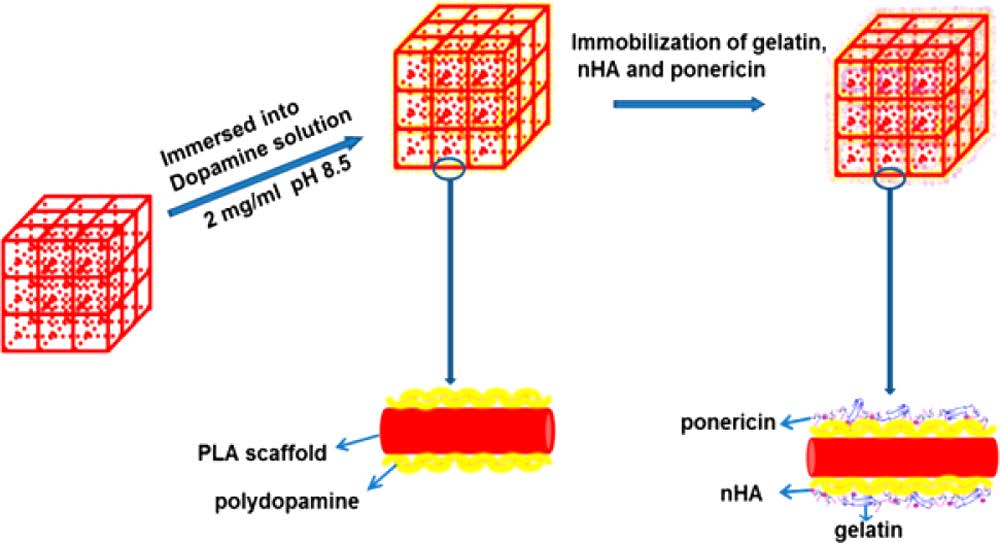|
长期抗菌效应可降解3D打印聚乳酸支架
ACS Sustainable Chem. Eng. 2018, 6, 2047−2054 随着器械的发展,人们在医学材料上的应用更加倾向于使用生物性可降解材料。 聚乳酸是以乳酸为主要原料聚合得到的聚合物,原料来源充分而且可以再生。聚乳酸的生产过程无污染,而且产品可以生物降解,实现在自然界中的循环,是理想的绿色高分子材料。对生物材料的研究人们大多数研究它的细胞毒性、生物相容性、对细胞的增值相应,也有通过银离子与生物材料结合实现材料的抗菌性能,但是银离子为纳米尺度,尺寸较小且具有流动性易进入细胞内,银离子与线粒体结合使细胞产生毒性。本文使用抗菌多肽涂抹于聚乳酸3D打印支架上,起到长期抗菌的效应且对细胞无任何毒性。 聚乳酸3D打印支架为多孔材料,支架涂抹聚羟基磷灰石,多巴胺,明胶和抗菌肽。通 过XPS,SEM,接触角,细胞培养,抗菌等性能测试,证明了具有长期抗菌效应的聚 乳酸3D打印支架材料的合成且证明了抗菌多肽对细胞无任何毒性,抗菌性能良好。 People tend to use biodegradable materials in medical materials with the development of equipment. Polylactic acid is a polymer synthesized by polymerization of lactic acid. The production process of polylactic acid is pollution-free, and the product can be biodegradable, realizing the circulation in nature. The production is an ideal green polymer material. Most people study the cytotoxicity, biocompatibility, the corresponding value of the cell, and there are also combining silver ions and biological materials to achieve the antibacterial properties. But for nanoscale silver ions, small size and liquid into the cell in the cell, silver ions combine with mitochondria cells to produce toxicity. In this paper, antibacterial peptides were applied to polylactic acid 3D printing scaffolds, which had a long-term antibacterial effect and had no toxicity to cells. Polylactic acid 3D printing stand is made of porous material, which is coated with polyhydroxyapatite, dopamine, gelatin and antimicrobial peptides by XPS, SEM and contact Angle, cell culture, such as antibacterial performance tests, proved that the long-term antibacterial effect of 3 d printing stent materials, the synthesis of poly (lactic acid) (PLA) and proved that the antibacterial peptide no toxicity to cells, good antibacterial properties. (吕彩莉) |
